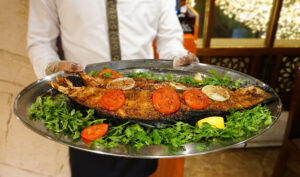
Much like everything else in 2020, Paris Pride was cancelled last June. This year, however, the city has re-opened, and let’s just say that people are ready to celebrate. Meaning this weekend, the Pride parade will dance down the streets of Paris once more. It will be a scaled back celebration in order to comply with the current health guidelines, but even so, I can’t wait for Paris to once again become a sea of rainbows. Therefore, in honour of Pride weekend, I’d like to tell you the story of one of France’s most famous and fascinating LGBTQ historical figures: Philippe I, Duke of Orléans.
Philippe was born on September 21st, 1640, the second son of King Louis XIII and Anne of Austria. His older brother was the future King Louis XIV, otherwise known as the Sun King. You’ve probably heard of Louis XIV. He is the longest reigning monarch in European history, and famously, he built the Palace of Versailles and made it the seat of the French monarchy. For these reasons and many more, Louis often gets the lion’s share of attention when it comes to French history. As a result, not many people know the story of his younger brother. But they should, because it’s a fascinating story. And it begins with his childhood.
In the Shadow of a King
As a child, Philippe was raised in a very deliberate manner. His mother had watched her husband and his younger brother be at odds for decades, and Anne was determined that this fate would not befall her two sons. As a result, everything about Philippe’s upbringing was designed to minimize any threat he might pose to his older brother as king. Philippe was well educated, but he was deliberately excluded from all lessons in governance, state policy, and any other knowledge that would aid a future king. Anne also dressed Philippe in girl’s clothing (pictured below on the right) and referred to him as her “little girl” in an effort to diminish his importance. Interestingly, Philippe would continue this practice for the rest of his life, often showing up to state parties at Versailles in full women’s dress.

On June 7th, 1654, Philippe’s older brother was officially crowned King Louis XIV of France, and it was Philippe who placed the crown on Louis’ head during the coronation. By this time, it had become clear that Philippe had no interest in the women at court, preferring instead the company of men. Anne, for her part, was ecstatic about this development. If Philippe were gay, there would be no threat of him challenging Louis for power, and so Anne actively encouraged Philippe’s sexual orientation. In fact, in 1658, when Philippe was 18, it was rumoured that Anne’s chief advisor sent his nephew to deliberately seduce the young prince in the “Italian vice”, the 17th century slang for homosexuality.
It was later that same year that Philippe met the notoriously handsome Chevalier de Lorraine, and the two men quickly fell into a passionate love affair. Their romantic relationship would be on and off over the following decades, but they remained incredibly close for the rest of their lives. By all accounts, the Chevalier de Lorraine was the great love of Philippe’s life.
Philippe I, Duke of Orléans
In 1661, at the age of 21, Philippe was granted the title of Duke of Orléans by his brother. Philippe was now officially Philippe I, Duke of Orléans, meaning he needed an heir for his new title and estate. It was time for the young prince to get married. Philippe turned to his brother in his search for a wife, and Louis arranged for his younger brother to marry Princess Henrietta of England (pictured below). On March 30th, 1661, Philippe and Henrietta signed their marriage contract at the Palais-Royal in Paris.
According to reports, Philippe was initially a loving and doting husband. However, the relationship quickly turned sour. It started when mere months after their marriage, Henrietta began an affair with none other than her brother-in-law, King Louis himself. Philippe retaliated by opening flaunting his affairs with the men at court, and Henrietta retaliated by openly seducing one of her husband’s former lovers, whom Philippe promptly had exiled from court. Henrietta then retaliated by convincing Louis to have the Chevalier de Lorraine imprisoned in Lyon, and Philippe retaliated by withdrawing from Versailles to the countryside, taking his wife with him and away from the excitement of the court. It took several months of pleading, but Philippe eventually managed to badger his brother into securing the Chevalier’s release.

Despite their fraught relationship, Henrietta bore Philippe two daughters. Court gossip was rife that Henrietta’s oldest daughter was actually Louis’ child, but Philippe was an attentive father nonetheless. Unfortunately, their marriage was not to last, as Henrietta suddenly died in 1670 at the age of just 26. On her deathbed, she claimed that Philippe and the Chevalier had poisoned her. However, over 100 people witnessed her autopsy, including representatives from both England and France, and it was determined that the princess had died by a perforated ulcer.
With Henrietta’s death, Philippe once again found himself in need of a wife, as he still did not have that all important son and heir. And once again, Louis played matchmaker for his brother, arranging a marriage with a German princess, Elizabeth Charlotte. Philippe’s second marriage was much more successful, in that the new couple were not openly hostile to each other. Elizabeth adopted Philippe’s two daughters by Henrietta, and in time, Elizabeth gave birth to two children who survived into adulthood, including a son. Philippe I, Duke of Orléans, finally had his heir.
The Many Sides of Philippe I, Duke of Orléans
One of the many reasons why Philippe is such a fascinating historical figure is his refusal to be easily categorized. He lived his life openly and flamboyantly, and as previously mentioned, he was a notorious crossdresser. He also served in the military, first in 1667, and later in 1676 and 1677 during the Franco-Dutch war. Philippe often served on the front lines with his troops, and was well respected by his men. On April 11th, 1677, his troops secured a decisive victory at the Battle of Cassel, and Philippe was hailed as a war hero back in Paris. Unfortunately, news of France’s victory was not well-received in Versailles, as there were worries that Philippe’s accomplishments were starting to outshine his brother’s. It is interesting to note that after the Battle of Cassel, Philippe was “retired” from the military, never to serve again.

However, he found ways to keep busy. As a young man, Philippe had been entirely financially dependent on his brother. However, as the Duke of Orléans, Philippe was now independently wealthy, and he dedicated the rest of his life to building his family’s estate. He made his home at the Chateau de Saint-Cloud, and carried out renovations that rivalled Versailles. He also amassed a great collection of art, later called the Orleans Collection. Finally, he actively invested in public infrastructure, helping to fund the Canal d’Orléans, which is still in use to this day.
The Grandfather of Europe
On June 9th, 1701, Philippe was having dinner with his son at Saint-Cloud. As they stood up after the meal, Philippe suddenly cried out and collapsed into his son’s arms. He had suffered a stroke, and Philippe died at the age of 60 later that day. His death was mourned in both Paris and Versailles by many, including the king and Philippe’s wife Elizabeth. Unfortunately for future historians, Elizabeth went on to burn thousands of letters that Philippe had received from his male lovers over the years, lest they fall into the wrong hands after his death.
Philippe may have passed on, but his legacy continued for generations. His children all married into European royal families, giving birth to generations of royal ancestors. It is for this reason that Philippe is often referred to as the Grandfather of Europe. His son, Philippe II, went on to rule France as regent during the early years of King Louis XV, and King Louis-Philippe I, the last king of France, was a direct descendent of Philippe.
An Extraordinary Life of an Extraordinary Man
Philippe I, Duke of Orléans, was many things, but boring was certainly not one of them. His life story is fascinating, and personally, I wish more people knew about the life of the younger brother of the Sun King. He lived his life openly at a time when it was far from safe to do so, even with his royal blood to protect him. And his openness allowed others, such as the incredible Julie d’Aubigny, to live their authentic lives as well. Philippe was not the first openly LGBTQ historical figure in French history, nor will he be the last, but he was definitely one of the most prominent. If he were alive today, I’d like to think that he would have a fabulous time at the parade.
The 2021 Paris Pride March will take place this Saturday, June 26th. The festivities will be a bit different than years past, as COVID-19 health guidelines remain in place. But we can still gather and celebrate Pride in ourselves and each other.
Laura Moore is a professional storyteller who loves history and the many stories that make Paris one of the most fascinating cities in the world. Join one of her signature tours to learn the story of a city.



